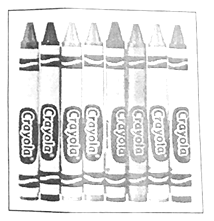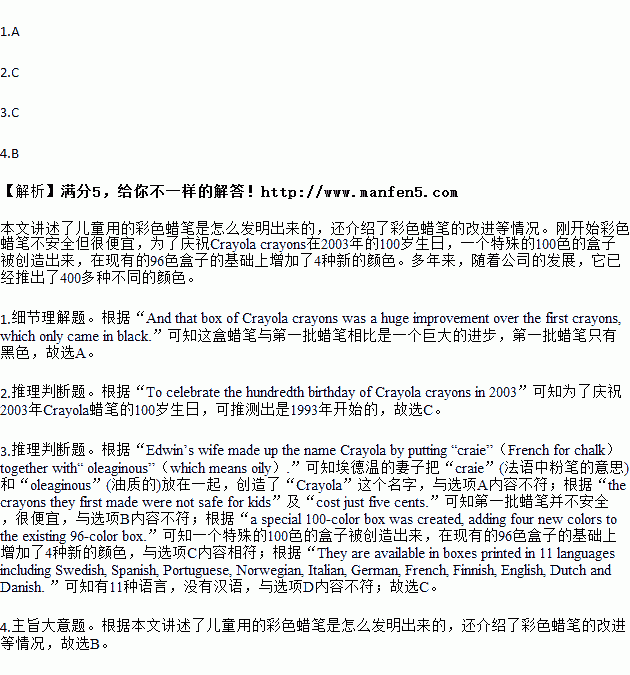题目内容

You can buy a box of Crayola crayons in 152 colors today, but way back in 1903, they only came in eight colors. And that box of Crayola crayons was a huge improvement over the first crayons, which only came in black.
Wax crayons were mostly used for industrial purposes until cousins Edwin Binney and Harold Smith introduced their brightly colored crayons for kids. Edwin’s wife made up the name Crayola by putting “craie”(French for chalk)together with“ oleaginous”(which means oily). In other words, oily chalk!
It’s hard to understand just how modern crayons are different from those in the past without look at the history of the crayon. In 1864 Edwin’s dad, Joseph Binney, started a chemical factory in New York City. It made a black pigment by burning oil. When the two cousins took over the factory in 1885, they started making a number of industrial art products for home and school use, but from 1900 to 1902, they started making pencils and dustless chalk for school blackboards in American classrooms. Soon after that, colored crayons were made. But the crayons they first made were not safe for kids, so they developed crayons that would be safe. The first box they sold-the one with eight colors--cost just five cents.
To celebrate the hundredth birthday of Crayola crayons in 2003, a special 100-color box was created, adding four new colors to the existing 96-color box. Over the years, as the company grown, it has introduced more than 400 different colors. Today there are over a hundred types of Crayola Crayons. They are available in boxes printed in 11 languages including Swedish, Spanish, Portuguese, Norwegian, Italian, German, French, Finnish, English, Dutch and Danish. Two billion Crayola Crayons are produced yearly. Also you can find crayons that smell good, crayons that wash out of clothes, and even egg-shaped crayons. Nowadays, plenty of other companies make colored crayons for children, too.
1.What color were the first crayons?
A.Black B.Red C.Yellow D.Green
2.The first eight-color Crayola crayons started to be sold in the year__________.
A.1864 B.1885 C.1903 D.2003
3.Which of the following statements are TRUE about Crayola crayons?
A.The name Crayola was a mixture of two English words.
B.The first Crayola crayons were not safe but very expensive.
C.The company invented four more colors for its 100th birthday.
D.Today Crayola crayon boxes are now also printed in Chinese language.
4.What’s the passage mainly about?
A.The changes of the colors of Crayola crayons.
B.The history of the invention of Crayola crayons.
C.The two cousins who made Crayola crayons.
D.The reason why Crayola crayons are still popular.
 全能测控期末小状元系列答案
全能测控期末小状元系列答案
